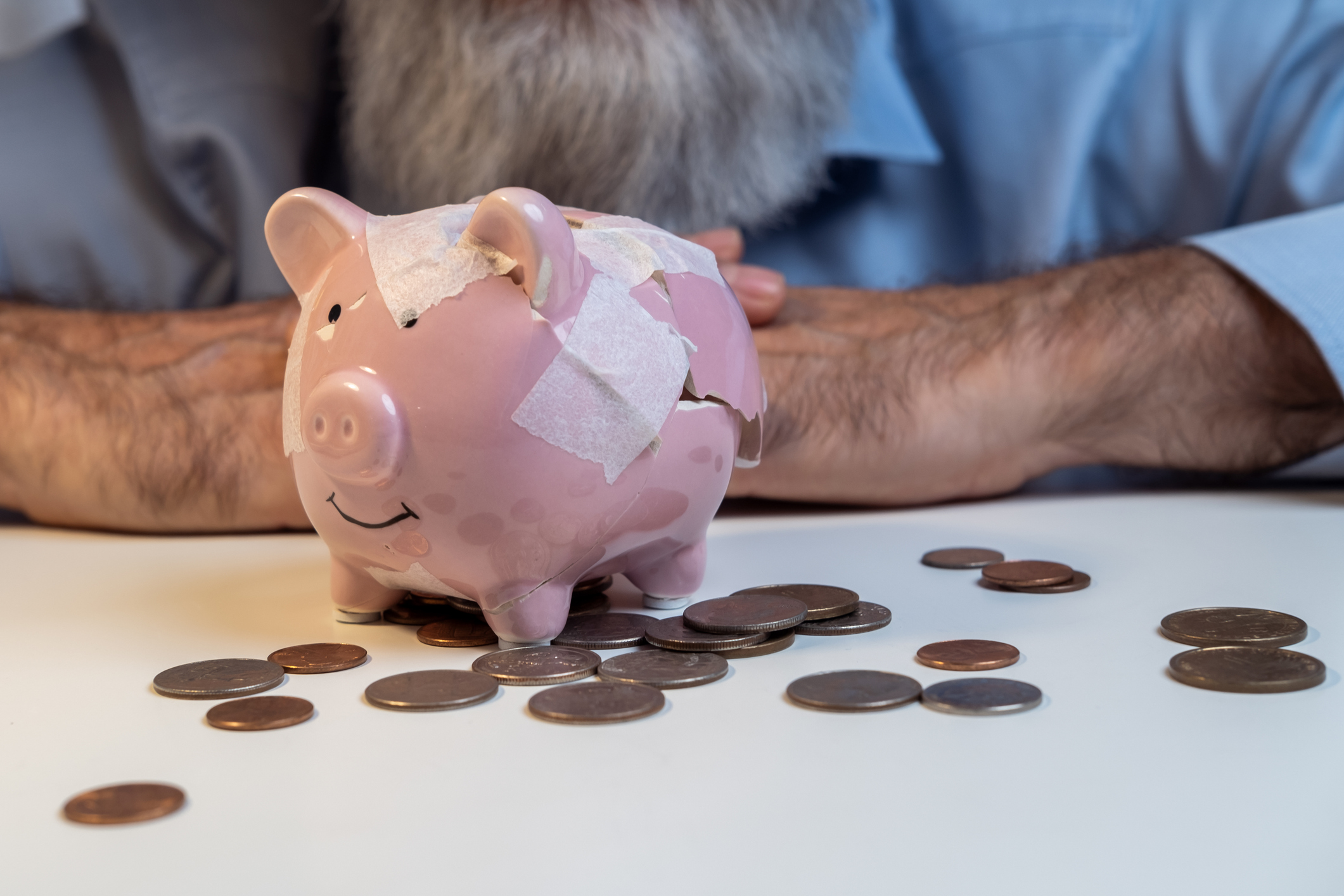What to Know About CD Ladders, A Flexible Way to Save
One way to keep your earnings on track is to spread out your cash.

If you’re looking for a flexible way to save, but still want to take advantage of high interest rates, building a CD ladder could help. Although interest rates on CD accounts have been softening, many accounts still offer rates above 4%. With a CD ladder, you can lock in these higher interest rates while they last and still access your cash at regular intervals.
What is a CD ladder?
With a CD, you agree to keep your money in an account for a certain period in exchange for a guaranteed interest rate. Terms range from three months to five years or more. The longer the term, the higher the rate. But you may not want to lock your money up for years. One way to stay flexible is with a CD ladder.
A CD ladder is a type of savings strategy where you spread your cash between several CD accounts with staggered maturity dates. This lets you take advantage of higher rates on longer-term CDs, while keeping a portion of your funds accessible at short-term intervals. CD ladders offer a flexible way to save your cash, as you’ll be able to access your money at regular intervals. Plus, opening a CD ladder eases the pressure of having to guess whether CD rates will go up or down.

Sign up for Kiplinger’s Free E-Newsletters
Profit and prosper with the best of expert advice on investing, taxes, retirement, personal finance and more - straight to your e-mail.
Profit and prosper with the best of expert advice - straight to your e-mail.
Building a CD ladder
To build a CD ladder, spread your cash among CDs of varying maturities — say, one, two, three, four and five years. Some of your savings will capture the higher rates that long-term CDs offer. When your first CD matures, you can cash out or reinvest the cash in a new 5-year CD to continue building your ladder. Then, when subsequent CDs mature, you’ll continue to reinvest those funds into new CDs to maintain the ladder. Plus, if rates continue to rise, you’ll be able to reinvest the money at a higher yield.
You’ll earn more if you ladder using CDs at more than one institution, but you’ll have to weigh the extra time you’ll spend setting up multiple accounts. However, you can easily compare current CD rates, by using our tool, powered by Bankrate, below.
Here’s an example of how a CD ladder would work. Typically, a CD ladder splits your cash into five “rungs,” meaning you’ll open five CDs, one year to five years. Let’s say you have $20,000 to invest. One way you could spread your cash is by splitting it equally.
- $4,000 in a one-year CD
- $4,000 in a two-year CD
- $4,000 in a three-year CD
- $4,000 in a four-year CD
- $4,000 in a five-year CD
When each CD matures, you’ll invest your cash, plus any earned interest, into another 5-year CD. This leaves you with five 5-year CDs, one maturing each year.
Advantages of a CD ladder
- Consistent cash flow: Since each CD matures at a regular interval, you have consistent access to your cash.
- Interest rates: As each CD matures, you have an opportunity to reinvest your cash and take advantage of any rise in interest rates.
- Flexibility: You can save in CDs at different financial institutions, letting you score the best interest rates available. Plus, you can choose whether or not to reinvest your cash once your CDs mature.
Disadvantages of a CD ladder
- Active management: Since you'll be opening multiple CDs, potentially at different banks or credit unions, it'll take some work to manage your accounts. If you forget to move funds from one CD to another once it matures, the CD could roll over into the same term that just ended.
- Inflation: Although rates are high, they are still outpaced by inflation. You could earn more from more aggressive investments, like stocks or bonds.
Bottom line
While a CD ladder strategy works for some people, it won’t work for every saver. It all comes down to how you feel most comfortable saving, and how readily you need to access your account deposits.
Factors to consider:
- You can’t change or remove rungs once you put your money down. If something happens where you need your money before the CD term is up, you may have to pay penalties for cashing out early. If you need even more flexibility and access than a CD ladder can provide, a high-yield or money market account might be more your speed.
- CDs are typically FDIC insured, meaning your cash will be covered up to $250,000 at any given bank. And since you lock in your interest rates, a change in the economy or outlook from the Fed won’t affect your future savings.
Related Content
Get Kiplinger Today newsletter — free
Profit and prosper with the best of Kiplinger's advice on investing, taxes, retirement, personal finance and much more. Delivered daily. Enter your email in the box and click Sign Me Up.

Rivan joined Kiplinger on Leap Day 2016 as a reporter for Kiplinger's Personal Finance magazine. A Michigan native, she graduated from the University of Michigan in 2014 and from there freelanced as a local copy editor and proofreader, and served as a research assistant to a local Detroit journalist. Her work has been featured in the Ann Arbor Observer and Sage Business Researcher. She is currently assistant editor, personal finance at The Washington Post.
- Erin BendigPersonal Finance Writer
- Donna LeValleyRetirement Writer
-
 6 Stunning Waterfront Homes for Sale Around the US
6 Stunning Waterfront Homes for Sale Around the USFrom private peninsulas to lakes, bayous and beyond, Kiplinger's "Listed" series brings you another selection of dream homes for sale on the waterfront.
By Charlotte Gorbold Published
-
 Six Reasons to Disinherit Someone and How to Do It
Six Reasons to Disinherit Someone and How to Do ItWhether you're navigating a second marriage, dealing with an estranged relative or leaving your assets to charity, there are reasons to disinherit someone. Here's how.
By Donna LeValley Published
-
 Use This 1-Year CD if You’ll Owe Taxes Next Year
Use This 1-Year CD if You’ll Owe Taxes Next YearA one-year CD allows you to set money aside now for taxes you'll owe next year. We'll show our best choice.
By Sean Jackson Published
-
 What Happens If You Bet $1,100 on the NCAA Men’s Championship Instead of Saving It?
What Happens If You Bet $1,100 on the NCAA Men’s Championship Instead of Saving It?We ran the numbers — see how betting on the big game compares to putting your money in a CD.
By Dori Zinn Published
-
 Why I'd Put My Tax Refund in a Money Market Account
Why I'd Put My Tax Refund in a Money Market AccountA money market account offers you the benefits of having access to your money when you need it, while earning a rate outpacing inflation.
By Sean Jackson Published
-
 5 CDs to Put Your Tax Refund Into
5 CDs to Put Your Tax Refund IntoPlanning to get a tax refund this year? Treat your future self with a risk-free way to grow your money. Here are the 5 best CDs to consider.
By Sean Jackson Published
-
 10 Best High-Yield Savings Accounts to Grow Your Tax Refund
10 Best High-Yield Savings Accounts to Grow Your Tax RefundIf you're getting a tax refund this year and want to grow it, here are the best high-yield savings accounts to make it happen.
By Sean Jackson Published
-
 I Wouldn't Use These Types of CD Accounts Right Now
I Wouldn't Use These Types of CD Accounts Right NowThe good news is you can earn over 4% on many CDs. However, there are three types of CDs I wouldn’t currently recommend.
By Sean Jackson Last updated
-
 Is a Long-Term CD the Best Option for Saving?
Is a Long-Term CD the Best Option for Saving?CDs offer good rates and guaranteed returns. However, are they the best option for longer range savings goals?
By Sean Jackson Published
-
 What Does Medicare Not Cover? Eight Things You Should Know
What Does Medicare Not Cover? Eight Things You Should KnowHealthy Living on a Budget Medicare Part A and Part B leave gaps in your healthcare coverage. But Medicare Advantage has problems, too.
By Donna LeValley Published